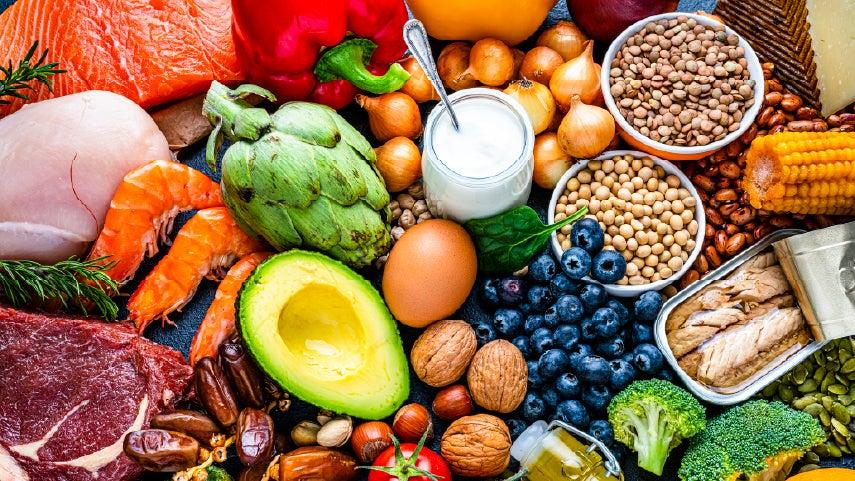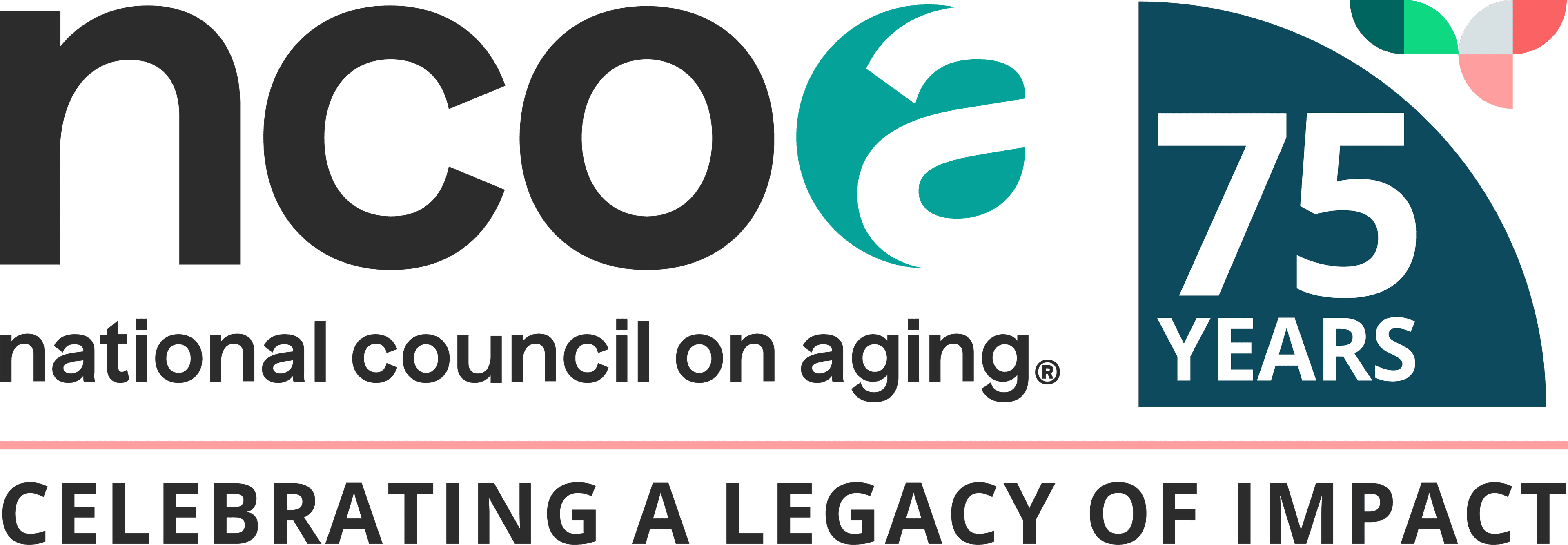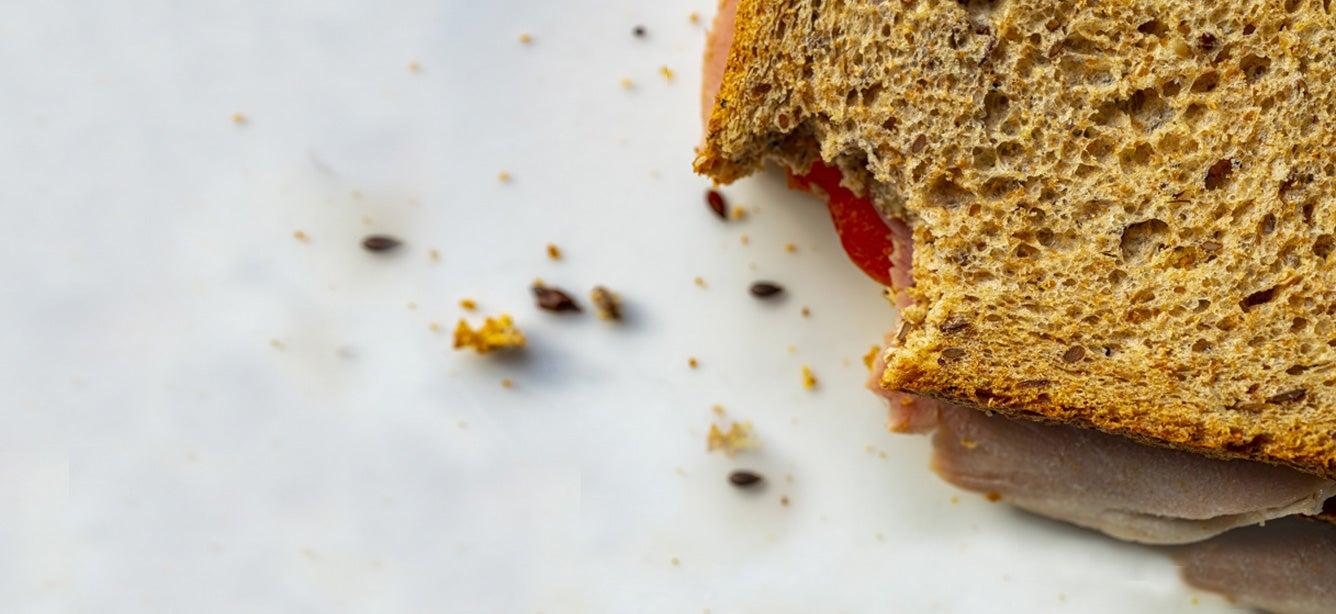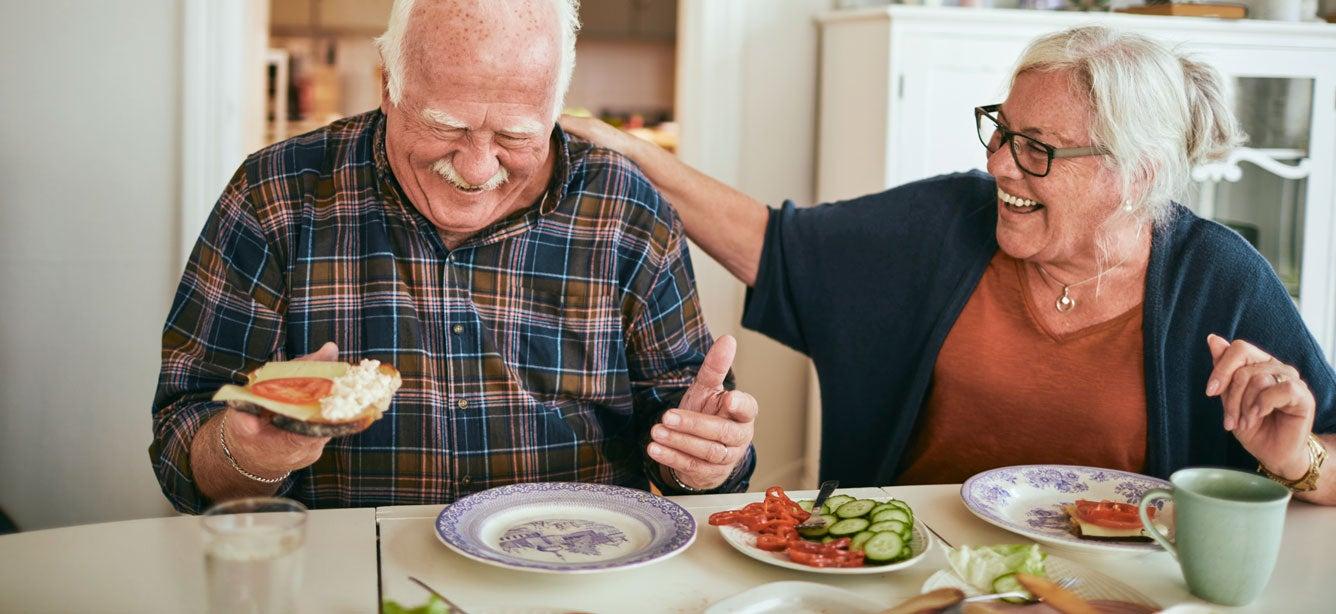
Related Topics
As a caregiver for an older adult, your support and companionship leave a lasting imprint. Of all the many tasks you tackle every day, making sure they get proper nutrition should be at the top of the list.
Nutrition at this stage of life isn’t only about fueling the body—it’s about aging with health and vibrance. And every bite counts.
Why is nutrition so important for older adults?
By supporting quality of life and independence, good nutrition plays a vital role in aging in place.
A nourishing diet helps older adults:
- Strengthen muscles and contributes to bone strength
- Maintain brain health and memory
- Recover from surgery, illness, or injury more quickly
- Maintain energy and a sense of well-being
As we get older, our nutritional needs shift. While older adults may need fewer calories overall, they require more of certain nutrients.
What nutrients do older people need most?
The nutritional requirements of older adults include:
- Protein helps combat age-related muscle wasting (sarcopenia) by helping to build and maintain muscle tissue. But more than 1 in 3 people over 50 don’t meet their daily protein needs.1 Older adults should strive for 1-1.2 grams of protein per kilogram of body weight each day, along with strength training exercises. For someone who weighs 150 pounds (68 kg), this would equate to 68 to 82 grams of protein per day. Tip: if you and your loved one need help to determine daily estimated protein intake needs, , try an online protein calculator, like this one from Nestle.
This protein calculator is for informational purposes only and is not a substitute for medical advice. This tool is intended for adults who are healthy and is not appropriate for children, pregnant or nursing women, competitive athletes, or people with specific diseases or medical conditions.
- Calcium plays a key role in keeping bones healthy and also supports muscle and nerve health. Older people have higher calcium needs than younger adults, with men age 51+ needing 1,000 mg a day and women needing 1,200 mg a day. Vitamin D helps the body use the calcium obtained from food (aim for 600-800 IU daily).
- Fiber supports digestion and heart health. Adults age 51+ need more fiber than younger people. Men should try to get 30 grams daily, while women should aim for 21 grams.
- Vitamin B12 plays a major role in energy and brain function. Adults age 60+ should strive for 2.4 mcg daily.
- Magnesium promotes healthy bones and helps regulate blood pressure and blood sugar. It may also support mental health. Older men should get 420 mg daily, while women should aim for 320 mg.
- Potassium helps our cells function optimally. Men should get about 3,400 mg of potassium a day, while 2,600 mg is a good target for women.
Make it a point to focus on nutrient-dense foods, or foods that pack a lot of nutrition into fewer calories. MyPlate can serve as a handy guide as you’re preparing meals and snacks for your care recipient.
What are some nutritional challenges faced by older adults?
Older men and women may face a range of physical, cognitive/emotional, and financial challenges to eating well. Below are some common culprits:
- Physical changes: Our resting metabolic rate naturally slows as we age, causing many people to have less of an appetite. Other changes that can prevent good nutrition in older adults include trouble swallowing (dysphagia), dental issues, or altered taste and smell.
- Medical conditions: Some older people may experience side effects from medications that make eating unpleasant (e.g., dry mouth or nausea). Others may have a restricted menu due to chronic disease like diabetes or heart disease.
- Cognitive and emotional factors: Depression, grief, and loneliness can dampen an older adult’s appetite. Episodes of memory loss or confusion related to Alzheimer’s disease and other dementias can lead to missed meals or poor food choices.
- Logistical and financial barriers: When an older person has limited mobility or lack of transportation, or they don’t live near a grocery store, this can drastically limit food options. Even if they’re able to get to a grocery store, older adults living on a fixed income may find it hard to afford fresh, healthy foods.
While these barriers can contribute to poor nutrition in older adults, you as a caregiver can help break them down. We show you how, below.
5 practical strategies for caregivers
Helping your older adult care recipient eat better doesn’t mean overhauling their entire diet overnight.
Here are a few simple strategies to promote healthier eating over time:
1. Prepare meals thoughtfully
“Aim for simplicity, balance, and nutrition,” explained Gretchen Dueñas-Tanbonliong, MS, MPH, RDN, Associate Director of Health and Wellness at NCOA. “Try to create eye-catching plates with colorful fruits and vegetables contrasted with earthy whole grains like brown rice or quinoa. Add lean proteins like grilled shrimp or seared chicken breast. A variety of visually appealing foods stimulates the senses and helps with appetite.”
Short on time? Focus on easy-to-assemble dishes or cook in large batches and freeze meals in advance. Tip: Healthy frozen meals are a great backup when life gets busy. Look for options with 650 mg of sodium or less that contain vegetables, whole grains, and a source of lean protein. Make sure additives or ultra-processed ingredients are minimal.
2. Change things up
The traditional “three meals a day” practice is not set in stone. If your care recipient doesn’t have much of an appetite, try serving smaller meals throughout the day instead. This can aid digestion, too.
Also, try small tweaks to make mealtimes more enjoyable. Play your care recipient’s favorite music. Dine with them or invite a friend or neighbor over. Sharing a meal can make eating feel like less of a chore.
3. Keep special nutritional needs in mind
Consider the unique requirements of the person you care for:
- If they have trouble chewing or swallowing, adjusting food textures (i.e., serving soft or pureed foods) will make meals more comfortable and less stressful for both of you. A speech-language pathologist can recommend safe textures or swallowing strategies.
- For adults experiencing unintended weight loss, adding calorie-dense snacks like nut butters, avocados, or full-fat yogurt can provide much-needed energy and nutrition.
- Oral nutrition supplements (ONS) can be a helpful tool to boost protein or calorie intake when appetite is low. Calculate your estimated protein needs here.
It’s also critical to keep an eye on hydration—an area where older adults often fall short. In fact, 1 in 4 older people have dehydration due to low fluid intake.3 Offer water regularly and include water-rich foods like broths, melons, cucumbers, and soups in their daily diet.
4. Consider changes in appetite and taste
Taste and smell perceptions can change with age, and some medications may affect the smell or flavor of food. To keep meals appealing, enhance foods with herbs and spices instead of extra salt (don’t be afraid to get creative!).
Try serving familiar or nostalgic meals to spark your care recipient’s interest. And if it makes sense, involve them in the menu planning or meal prep process. They’ll feel more engaged when they have a say in what they’re eating.
5. Tap into community support resources
Here’s one thing to keep in mind as a caregiver of an older adult: You don’t have to do it all alone. Explore these strategies for extra support:
- Look into home meal delivery programs like Meals on Wheels and senior meal sites, where they can enjoy a meal in a group setting.
- If your care recipient has low income, the Supplemental Nutrition Assistance Program (SNAP) can help them stretch their food budget.
- If getting to a supermarket is a challenge, consider online grocery delivery services to ensure access to fresh, healthy ingredients.
When to seek professional help
Despite your best efforts, the older adult you care for may still not be getting the nutrition they need to thrive.
That’s why it’s important to watch for the warning signs of malnutrition, which may include:
- Muscle weakness or wasting
- Sudden or unexplained weight loss
- Constant fatigue
- Increased incidents of illness or infections
- Irritability or depression
- Reduced appetite or interest in food
Nearly half of older adults are at risk for malnutrition.2 If you notice these symptoms, don’t wait—talk to your care recipient’s doctor about your concerns. They may refer you to a registered dietitian nutritionist (RDN), who can identify the specific nutritional problems and provide a tailored meal plan.
As a caregiver, your guidance makes all the difference
Eating well is essential to healthy aging, but it’s not always easy. As a caregiver, you’re in a unique position to make good nutrition achievable for the person you care for.
“Even modest changes—like adding a daily protein shake or serving favorite cultural dishes—can move the needle,” explained Dueñas-Tanbonliong. “The key is to be supportive, stay proactive, and make full use of the resources available to both of you.”
Sources
1. J L Krok-Schoen, et al. Low Dietary Protein Intakes and Associated Dietary Patterns and Functional Limitations in an Aging Population: A NHANES analysis. Journal of Nutrition, Health and Aging. 2019. Found on the internet at https://pubmed.ncbi.nlm.nih.gov/30932132/
2. Administration for Community Living. Malnutrition. Found on the internet at https://acl.gov/senior-nutrition/malnutrition
3. Ellice Parkinson, et al. Low-intake dehydration prevalence in non-hospitalised older adults: Systematic review and meta-analysis. Clinical Nutrition. August 2023. Found on the internet at https://www.sciencedirect.com/science/article/pii/S0261561423001851




